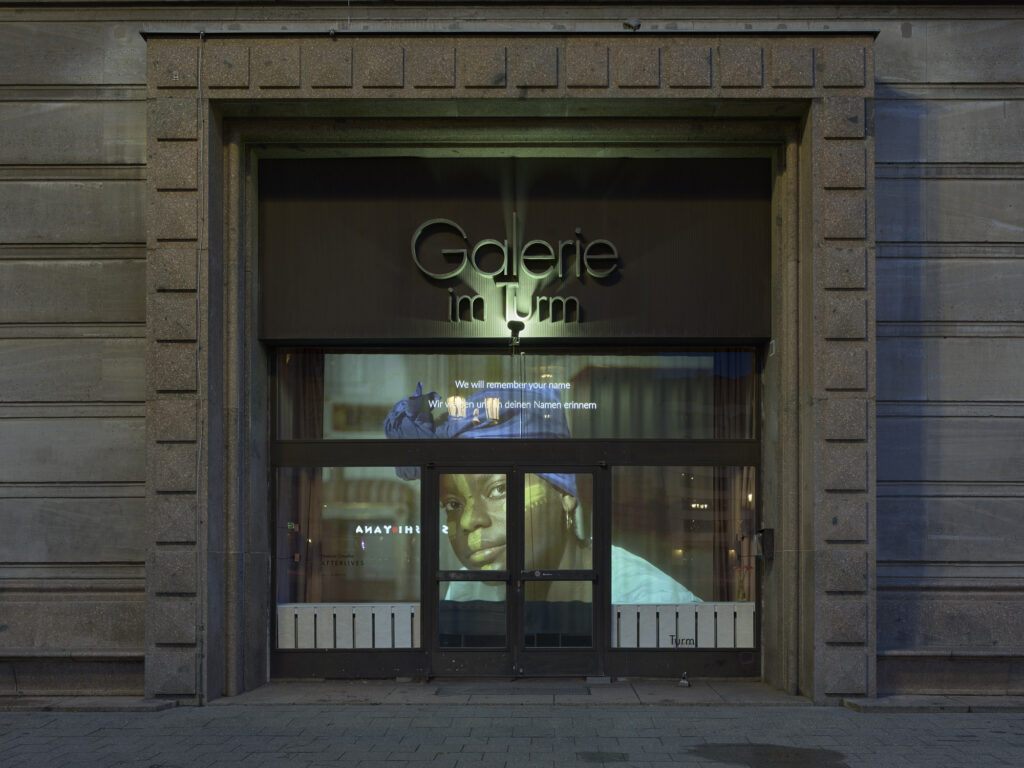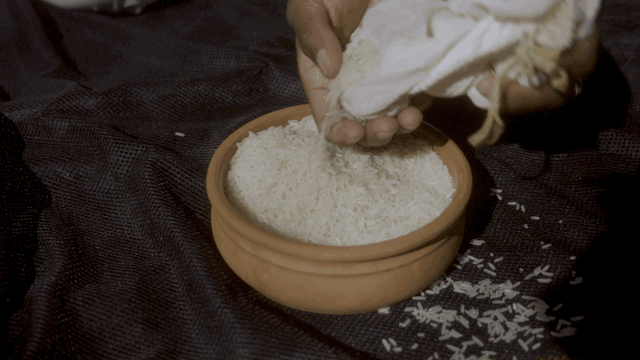
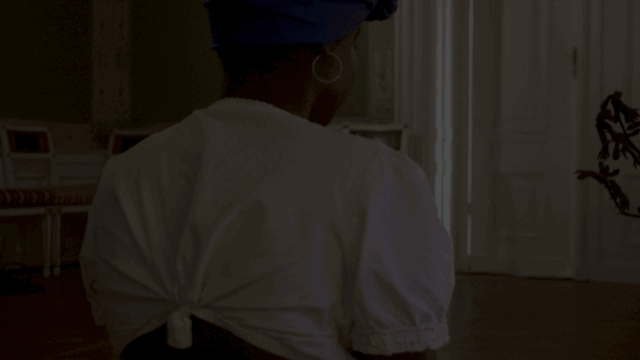
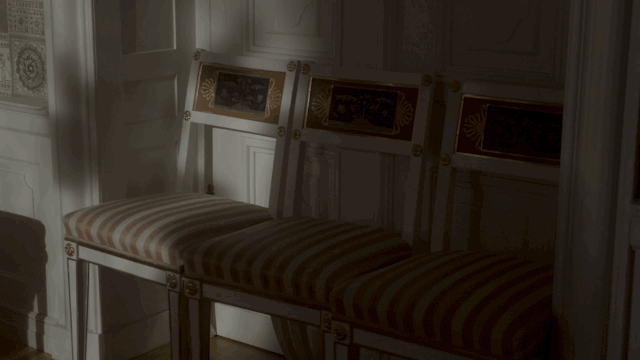
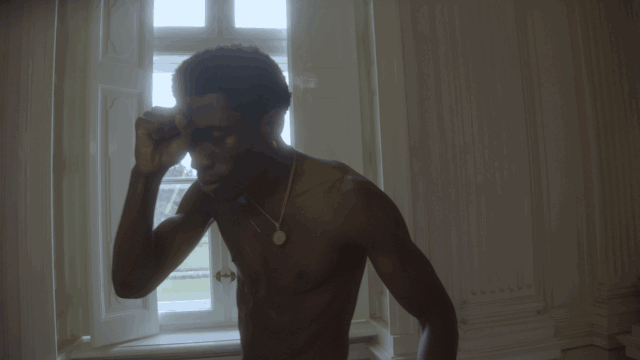
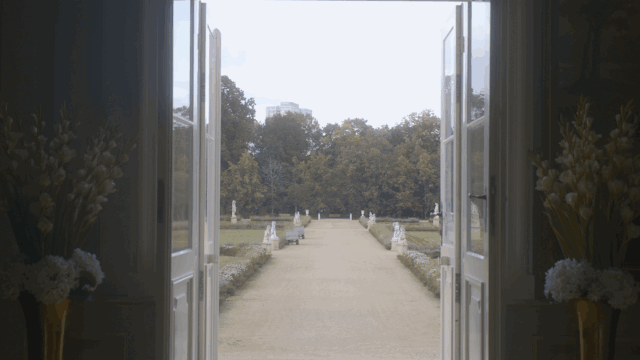
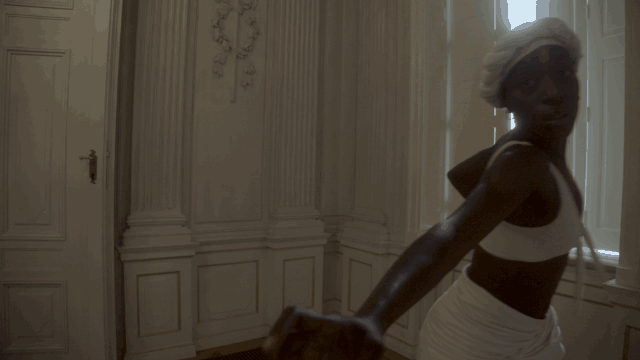
Rosenfelde
In the Schloss Friedrichsfelde–a picturesque, neoclassical pleasure palace in North East Berlin–the ghosts of history begin to make themselves seen. Summoned by a syncretic Afro-Caribbean prayer ceremony, embodied spirits emerge and usher us through the halls of former “Rosenfelde Palace.” Sold from Groß Friedrichsburg along the Gold Coast, these ghosts of history fill the Schloss Friedrichsfelde—built in part with the profits from their enslavement.
Year: 2021
Length: 5′
Format: HD, stereo.
Languages: Haitian Kreyol
Subtitles: German and English Subtitles
Exhibitions:
A F T E R L I V E S. Galerie im Turm. Berlin, DE. 2022-3.
Director, Editor: Nnenna Onuoha
Cinematographer: Omar Zaki
Lighting: Elisa Daniel
Sound Design: Gugulethu Duma
Sound Recording: Marianne Kahle
Make-Up: Guerdy Casimir
Dancers: Samuel Olatidoye, Shar Adams
Voiceover & Ritual: Maxi Douye
Awards:
Amadeu Antonio Preis. 2023.
Exhibitions:
As Above, So Below: Three Films on Ritual. Kunstverein Langenhagen. 2024.
In this exhibition, Nnenna Onuoha presents three video works that show different forms of rituals and processes, documenting them how black bodies move in and through spaces – from intimate to public space. The three videos draw our attention to everyday rituals of (self-)care and care, as well as on how the attention and honoring of one’s body is interwoven into larger actions of intervention and the collective recovery of stories that focus on black voices.
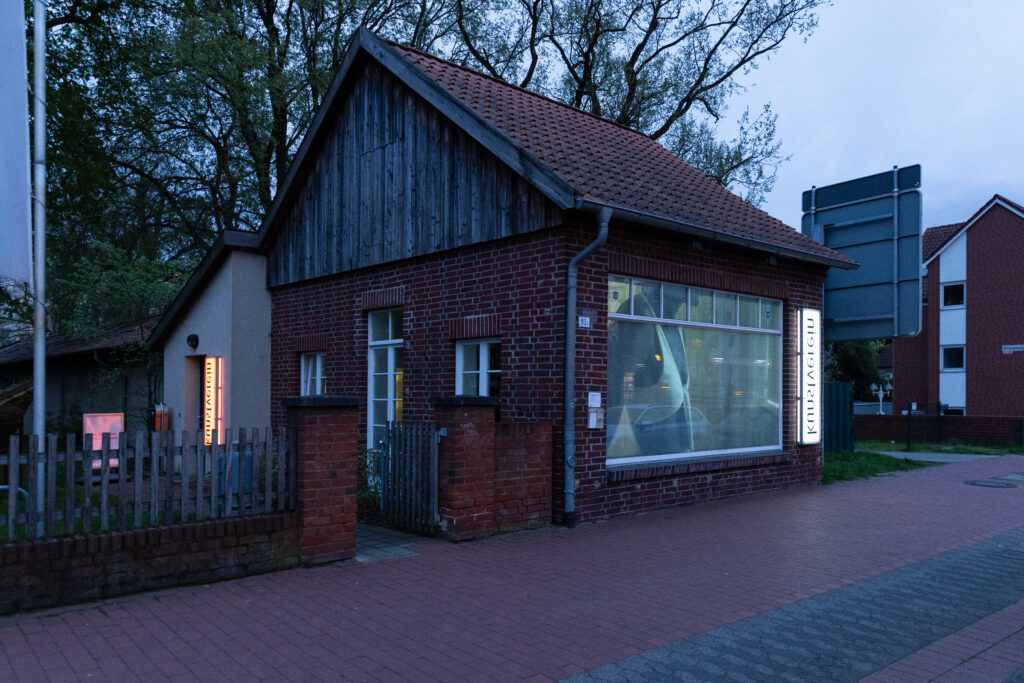
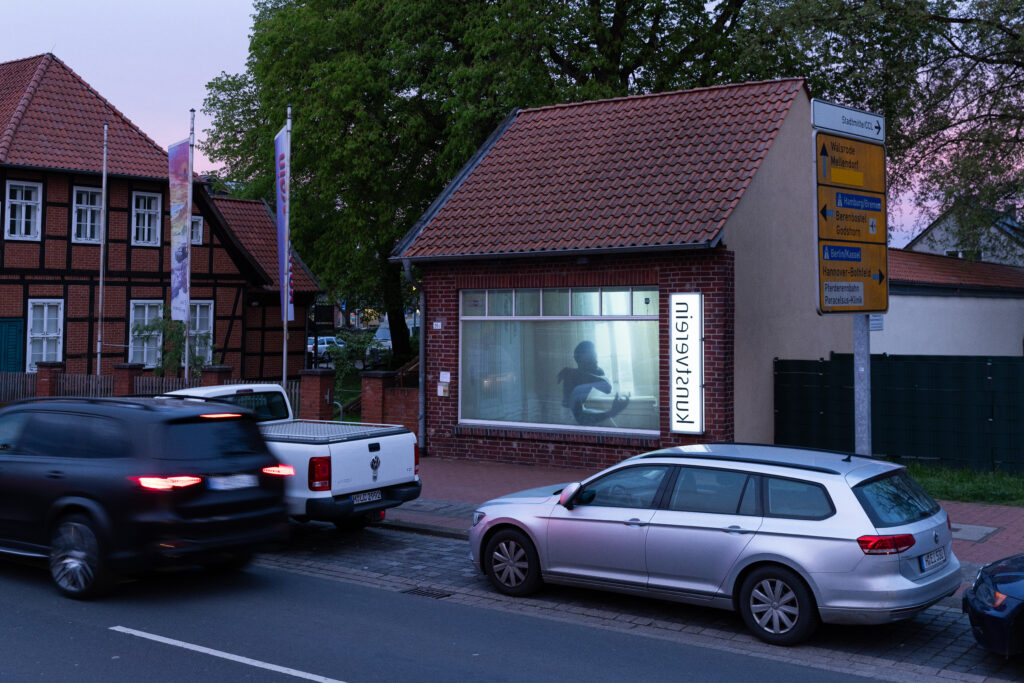
A F T E R L I V E S. Galerie im Turm. 2022-3.
‘How do I explain that I remember feelings more than I’m remembering the facts?‘
–Mehitabel ‘Metty‘ Markwei in The A-Team
During the exhibition AFTERLIVES, Nnenna Onuoha shows four of her recent video works. Each of them will be presented in an individual display, one after another. Centering Afrodiasporic voices in processes such as collective re-membering, archiving of Black experience and (self-)care, Onuoha approaches histories of colonialism across West Africa, Europe and the United States. By carefully and repeatedly applying these methods, the artist generates histories of the past that can be shared collectively and thus may work as a means to repair.

